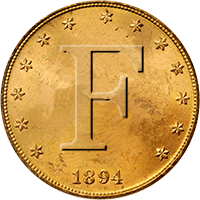I have witness many times, I'll get a short choppy high tone when swinging. Center the coil and vary sweep speed and still the same broken high tone. Sometimes even when rotating around target with coil while sweeping the tone remains broken or disappears altogether. Screen readings have been at times reading 3 sometimes 4 sometimes 5. And my disc was generally set between 5.6 and 6.8. Now some folks might think these signals are in fact iron. Believe me been there and done that. Not all will be a good target, but I'm finding a pretty high percentage of them are good targets. Things to look/listen for are, when you find the best sweep speed that gives the best audio (although broken) try and use that same sweep speed and coil placement. Does the target yield "almost" exact same tonal characteristics?? Also watch the horseshoe. Does the left portion stay highlighted on all sweeps? If so more likely iron. But if the horseshoe's right portion stays highlighted on all sweeps, probably nonferrous target (big iron excluded). Now, what if the sweeps cause the horseshoe to flicker on both the right and left portions? A toss up could be ferrous or nonferrous. But remember what I said earlier about audio when sweeping, Does the target provide almost "exact" same audio although broken? Let's talk a little more about the audio. The audio that nonferrous brings into the deus is a more mellow sound , sweeter. The sound comes almost instantly when the coil passes over a nonferrous target. There is not the sound of rejection, like the big iron makes with Deus. The tonal differences are not as exaggerated (difference between say iron and silver coin) when severe masking is going on. The tonal difference is still there nonetheless. And with practice you'll better see what I'm referring to. In iron trust trust your ears far more than your eyes when using the Deus. Nothing wrong with looking at the meter though. It's how we can better find and use the small, not talked about, less obvious behavior characteristics of the Deus. In doing so we can all make more finds with our machines.
Find's Treasure Forums
Welcome to Find's Treasure Forums, Guests!
You are viewing this forums as a guest which limits you to read only status.
Only registered members may post stories, questions, classifieds, reply to other posts, contact other members using built in messaging and use many other features found on these forums.
Why not register and join us today? It's free! (We don't share your email addresses with anyone.) We keep email addresses of our users to protect them and others from bad people posting things they shouldn't.
Click here to register!
Need Support Help?
Cannot log in?, click here to have new password emailed to you
Hunting in iron, don't believe the screen #s
- Thread starter squirrel1
- Start date


